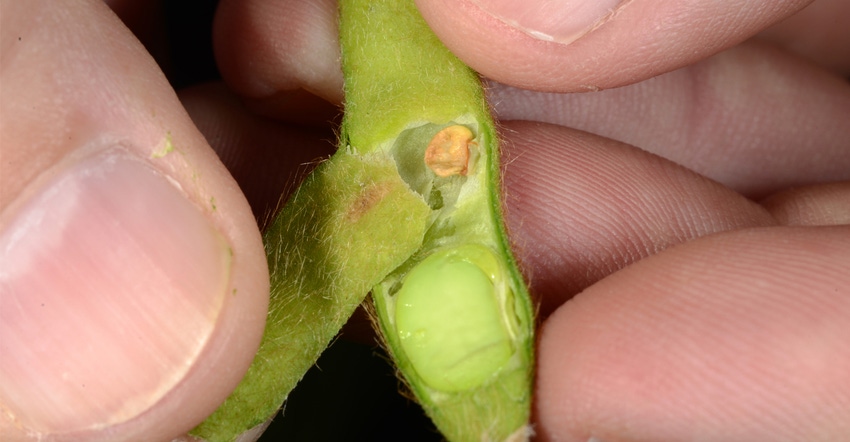
Unless you're in an area where corn performs much better than soybeans, the market may be signaling that you should plant more soybeans and less corn. For many farmers, that may mean following soybeans with soybeans in some fields. Greg Kneubuhler suggests considering these eight agronomic factors before making the final decision to go heavier on beans. Knuebuhler is a crops consultant and an Indiana Certified Crop Adviser. He operates G&K Concepts Inc., Harlan.
1. History suggests a yield decrease for beans after beans. Planting soybeans back to back doesn’t automatically mean low yields, Kneubuhler says. However, past experience says beans after beans normally equates to a 5% to 15% potential yield loss compared to rotated ground.
2. Don’t ignore soil fertility and nutrient requirements. “Soybeans are often planted and forgotten,” Kneubuhler says. “Soybeans will utilize about 40% more potassium than a corn crop. I recommend maintaining high soil fertility in a continuous soybean situation.” He adds, though, that data shows that adding nitrogen doesn’t equate to yield gain in soybeans.
3. Soybean cyst nematode causes hidden losses on many farms. Typically, lighter exchange capacity soils carry a higher risk of building populations of soybeans cyst nematodes, Kneubuhler observes. “Keep in mind that planting soybeans back to back raises the risk of SCN.”
4. Certain diseases overwinter in soybean residue. These include bacterial blight, stem canker, pod and stem blight, septoria brown spot and frogeye leaf spot. “Beans back to beans carry a higher risk of the impact of that carryover,” says the CCA. “Fields that are poorly drained or subject to a higher risk of soil compaction will show up with these diseases much easier. Often, fungicide treatments show a higher rate of return on investment in beans after beans.”
5. Start with fungicide seed treatments. Kneubuhler recommends fungicide seed treatments from the start in this situation. Second-year beans carry a higher risk of experiencing pythium, phytophthora root rot and sudden death syndrome.
6. Variety selection is key to preventing potential yield loss. “Choose varieties with good disease resistance or tolerance,” Kneubuhler says. “Avoid placing the same variety back in the same field. Sometimes earlier-maturing varieties can miss disease pressure which tends to come on later in the season.”
7. Don’t ignore the importance of weed control. “I highly favor a good residual program ahead of planting,” Kneubuhler says. “That’s particularly true in light of our current problems with marestail, Palmer amaranth and waterhemp. Don’t rely only on postemergence herbicides.”
8. Don’t overlook insects. Whenever you vary the crop rotation, scout for insects — especially pod feeders like bean leaf beetles, rootworm beetles and Japanese beetles. Treat if needed. Kneubuhler says that in comparison to the alternative, insecticides are low-cost and proven to have a high return on investment.
Editor’s note: This is the first in a series of articles by agronomists, Extension educators and crop consultants to assist you in fine-tuning management skills if you plant soybeans after soybeans.
About the Author(s)
You May Also Like




